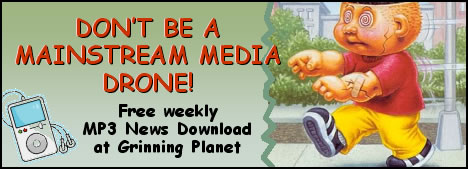|
While I'm still a little miffed that my pitching career was cut short long ago by an unfortunate hay fork accident on my grandfather's alfalfa-burger farm, I do not hold any grudges against farms. In fact, I still like farms a lot. It's not only due to their rural appeal—I'm partial to eating the food they produce!
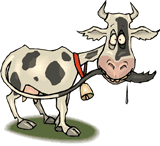 But when it comes to farms... Well, we've got trouble, my friends, right here in Sprawly City. The good news is, we don't have to throw up our hands in exasperation or start a marching band. There are people who think about these things, analyze the data, and propose solutions. One such group is Smart Growth America, and they're here today to talk about sprawl, tax burdens, open space, and farm land.
But when it comes to farms... Well, we've got trouble, my friends, right here in Sprawly City. The good news is, we don't have to throw up our hands in exasperation or start a marching band. There are people who think about these things, analyze the data, and propose solutions. One such group is Smart Growth America, and they're here today to talk about sprawl, tax burdens, open space, and farm land.
~ ~ ~
Smart Growth, Open Space & Farm Land
by Smart Growth America
A core goal of smart growth is to encourage and attract investment into existing communities, and to ensure that residents in those communities have access to the parks and recreational opportunities that make neighborhoods more enjoyable.
In the process, smart growth preserves farm land, ranch land, and open space in rural areas by decreasing the pressure to develop there. The opposite is also true. Programs to preserve open space and farm land can aid efforts to direct growth into existing communities, protect the environment and make communities more livable. Read on to find out more about the relationship between sprawl, smart growth, and open-space and farm-land preservation.
Sprawl and Farm Land Consumption
In October 2002, American Farm land Trust released a report, "Farming on the Edge: Sprawling Development Threatens America's Best Farm Land." It found that between 1992 and 1997, the US paved over more than 6 million acres of farm land, an area
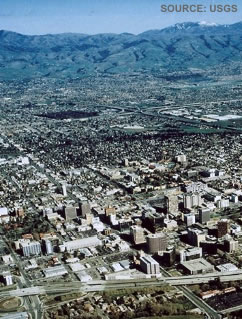 approximately the size of Maryland. Americans developed twice as much farm land in the 1990s as in the 1980s, and we are losing high quality farm land—the land best suited for growing food—the fastest.
approximately the size of Maryland. Americans developed twice as much farm land in the 1990s as in the 1980s, and we are losing high quality farm land—the land best suited for growing food—the fastest.
However, the most disturbing finding was that inefficient land use rather than economic growth was to blame for the trend. From 1982-1997, the US population grew by 17%, while urbanized land grew by 47%. Over the past 20 years, the acreage per person for new housing almost doubled, and since 1994, housing lots of 10 acres or more have accounted for 55% of the land developed.
Economic Disadvantages of Sprawl
The loss of farm land and open space often causes unexpected economic challenges for rural communities. In these communities, farm land, forests, ranch land, and open space tend to be the economic drivers that attract businesses, residents and tourists. Sprawling development compromises the resources that are the core of the community's economy.
At the same time, sprawling development rarely brings about the economic benefits anticipated. While it is true that an acre of land with a new house generates more total revenue than an acre of hay or corn, the cost of providing infrastructure and services to that property is greater for residential development than for commercial, farm, or forest land. Cost of Community Services (COCS) studies conducted in more than 83 communities show that owners of farm, forest and open lands pay more in local tax revenues than it costs local government to provide services
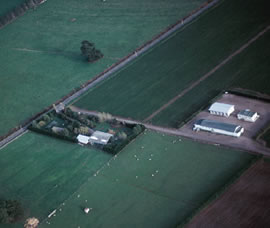 to their properties. Residential land uses, in contrast, are a net drain on municipal coffers: It costs local governments more to provide services to homeowners than residential landowners pay in property taxes.
to their properties. Residential land uses, in contrast, are a net drain on municipal coffers: It costs local governments more to provide services to homeowners than residential landowners pay in property taxes.
One type of land use is not by itself better than another; however, understanding the benefits and costs of different types of development can be helpful in comparing and evaluating alternative growth strategies that may include a mix of different land uses or simply concentrate on one. COCS studies have been helpful in dispelling the myths that residential development automatically leads to lower taxes and that farm land must be developed to ensure a community's continued fiscal stability.
Smart Growth, Open Space Preservation, and Farm Land Preservation
Smart growth is an approach to development that concentrates on investing in existing communities. By directing growth to communities where people already live and work, smart growth limits the amount of farm land and open space that is developed, making existing communities more attractive; providing a mix of housing, restaurants, parks, cafes, and jobs; and minimizing the need for new water, sewer, and road infrastructure that would increase taxpayer burdens.
For rural communities, smart growth means...
- supporting town centers and Main Streets,
- attracting and encouraging growth and investment in and around these centers and within existing communities, thus
- preserving the character of rural towns.
In contrast, sprawling development in rural, suburban, and urban areas is automobile-oriented, single-use development—frequently occurring along or at the intersection of nearby highways—that draws economic activity out of downtowns, damaging their vitality and dramatically increasing overall infrastructure needs. Smart growth, in contrast, simultaneously preserves open space and farm land while ensuring that there is an adequate supply of housing for families with a mix of incomes. Smart growth provides residents with a mix of shops, offices, restaurants, and other services that they can get to by automobile, bus, bike, or walking.
Economic Benefits
Agriculture contributes to local economies directly through sales, job creation, support services, and businesses, and by supplying lucrative secondary markets such as food processing. In many rural areas, tourism is a major industry that supports local economies, and as discussed earlier, farm land and open space impose significantly fewer costs on local governments.
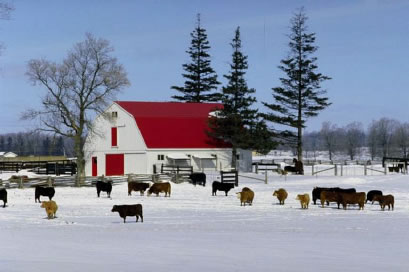
Communities across the country have found that protecting open space, parks, and farm land is a strategy that can be used to strengthen existing communities, attract businesses, and avoid the costs of urban and suburban sprawl. As part of a package of smart growth programs and policies, communities that offer a high quality of life (including well maintained neighborhood parks and regional park systems) consistently attract and retain businesses.
For example, Portland, Oregon, which adopted intensive growth management practices beginning in the 1970s and invested in an extensive park system, has attracted numerous new companies, including Hewlett-Packard, Intel, and Hyundai, which picked the city because its quality of life would be able to attract an educated workforce. According to Bill Calder, a spokesman for Intel, the computer chip manufacturer that has nearly 9,000 employees in Oregon, "Companies that can locate anywhere they want to will go to places that attract good people."
Know someone who might find this article interesting?
Please forward it to them
Resources:
| Smart Growth America is a coalition of nearly 100 advocacy organizations that have a stake in how metropolitan expansion affects our environment, quality of life and economic sustainability. Learn more at www.smartgrowthamerica.org. |
|
~ ~ ~
More articles and resources on....
Get Grinning Planet free via email
|

